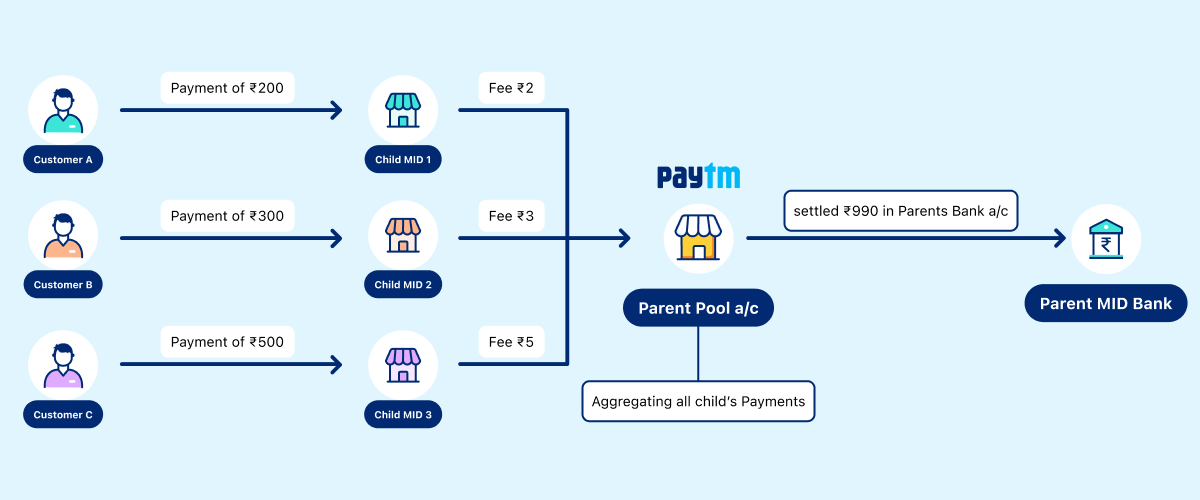Following are three major T+N settlement strategies used in Paytm:
Following are three major T+N settlement strategies used in Paytm:
Use Case: Hereby, the default net Settlement of the funds applies to the merchant child MID. The net amount would be the payment amount minus all applicable deductions, like Commissions, GST, Platform fees, rental, EMI, etc.
Example: if a retail merchant ABC with 100 outlets (100 child MIDs) wants to settle their funds to their respective outlets (Child MIDs) only.
The default net Settlement of the funds to the merchant child MID is calculated as:-
Net amount = Payment amount - Applicable deductions (Commissions, GST, Platform fees, rental, EMI, etc.)
All the payouts of the associated child merchants will be sent to the individual child merchants only. Each payout generated for the child merchants will be paid out to the child merchants' bank account and not the aggregator merchants' account. The default settlement of settling the funds to that payment's merchant MID only.
Use Case: It's an important use case for organized offline retail where in large merchants can have more than one shop front but are owned by the same organization. Hereby, a single payout of multiple shop fronts of the same merchants to a single bank account.
Example: if a retail merchant ABC with 100 outlets (100 child MIDs) wants to settle their funds on an aggregate / parent MID.

Aggregated payout of all child (outlets) settles on aggregator MID in a linked bank account. It's an important use case for Organized offline retail where in large merchants can have more than one shop front but are owned by the same organization.
Use Case: This is an important use case for marketplace merchants / online platforms & education institutions that would want PG to directly settle with its vendor partners, and provide vendor-level reconciliation support. For more details, refer to the Split Settlement page.
Note: Multiple variations will be launched soon: Post Transaction Split (split will be entertained post the order creations), Vendor level refund and commission deductions, and Split Settlement on Custom Cycles.